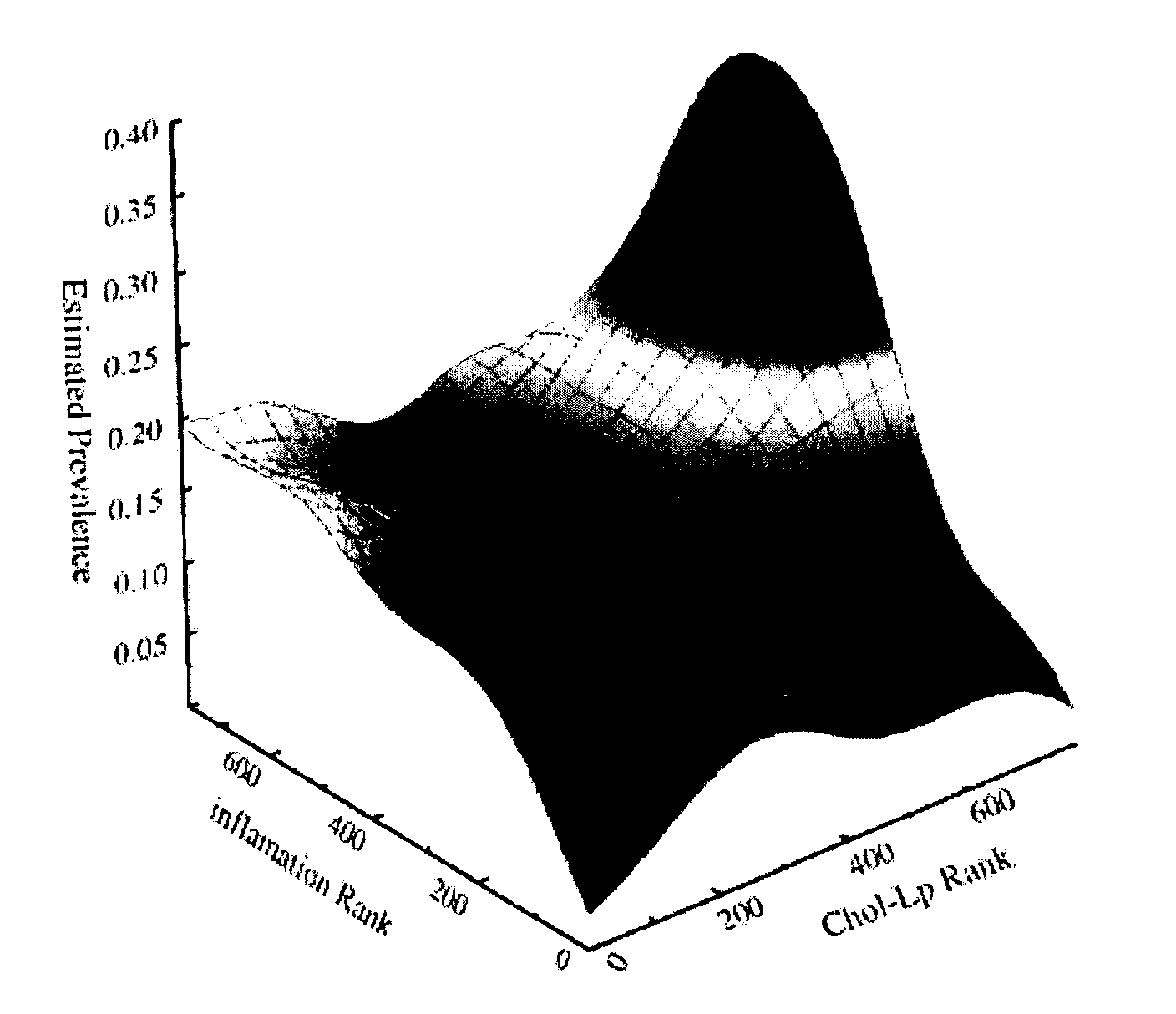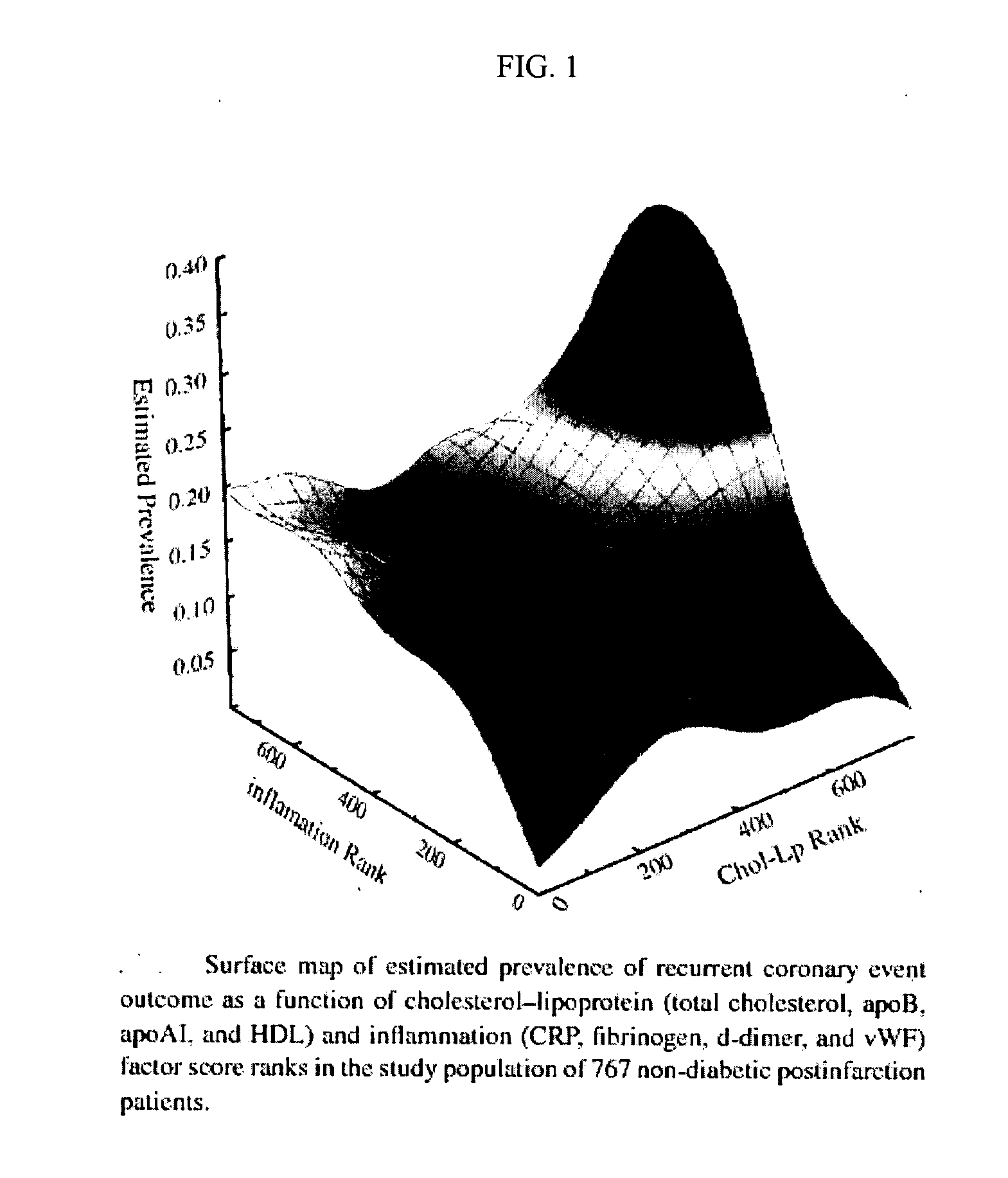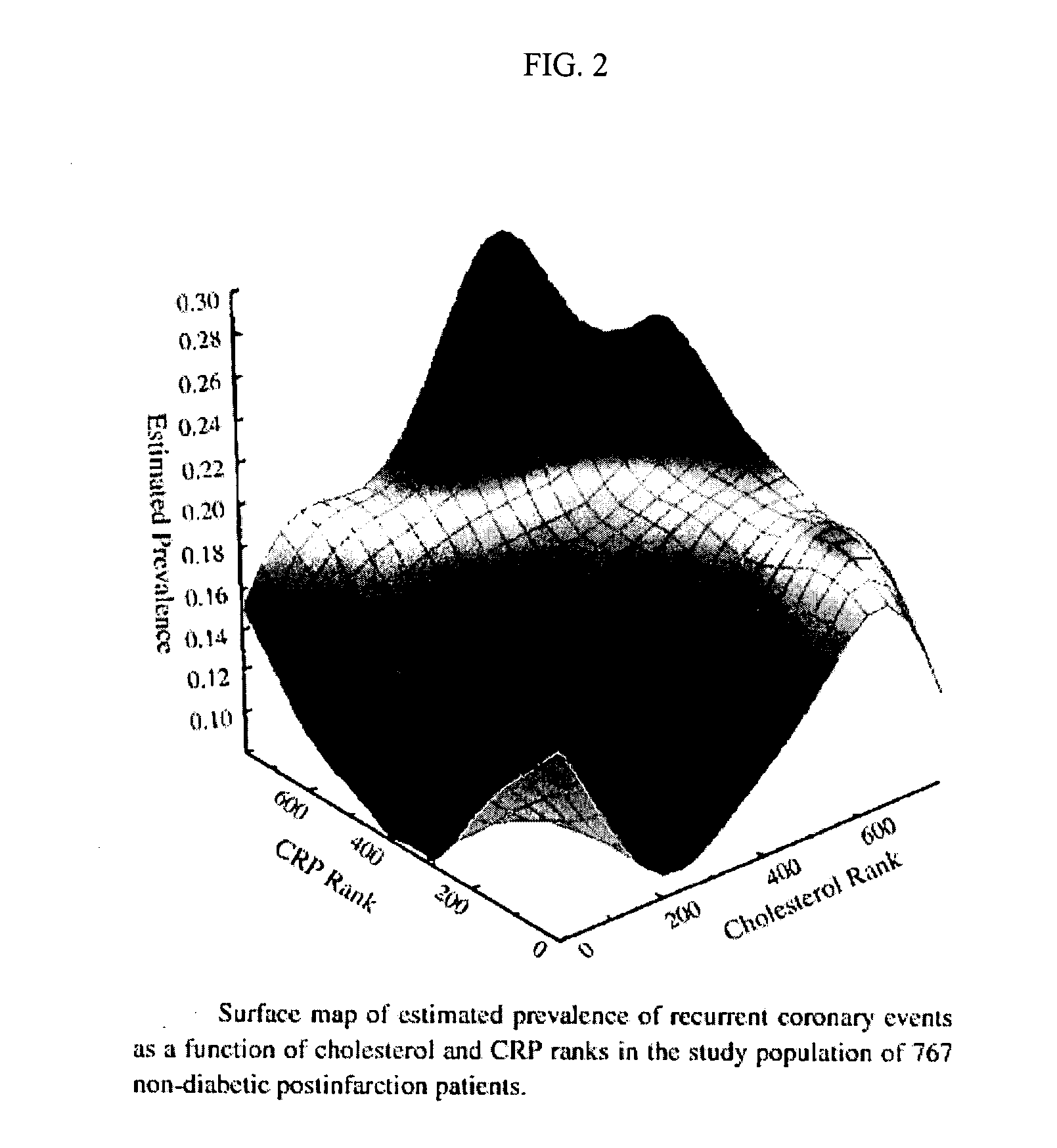Identifying risk of a medical event
a technology for a medical event, which is applied in the field of identifying the risk of a medical event, can solve the problems of myocardial infarction, the leading cause of death of cardiac disease in developed countries, and achieve the effect of increasing the risk
- Summary
- Abstract
- Description
- Claims
- Application Information
AI Technical Summary
Benefits of technology
Problems solved by technology
Method used
Image
Examples
example 1
Relationship between HDL, CRP and Risk of a Coronary Event
Study Population
[0114] In examining the relationship between HDL, CRP, and the risk of a coronary event, the study population comprised the 767 patients of the THROMBO study who were non-diabetic and had complete laboratory data. Recurrent coronary outcome events for this study were cardiac death, myocardial infarction (MI), or unstable angina, whichever occurred first, and average length of follow-up was 26 months.
Independent Variables
[0115] Blood markers on fasting sera were determined two months after index MI. Concentrations of apolipoprotein-B (apoB), total cholesterol (Chol), apolipoprotein-A1 (apoA1), high density lipoprotein cholesterol (HDL), triglyceride (Trig), LDL peak particle diameter (PPD), glucose (Glu), insulin (Ins), BMI, plasminogen activator inhibitor-1 (PAI-1), lipoprotein(a) (Lp(a)), C-reactive protein (CRP), von Willibrand factor antigen (vWF), fibrinogen (Fibr), D-dimer (D-dim), Factor VII (FVII)...
example 2
Relationship Between Genetic Variants of p22phox and Risk of a Coronary Event
Study Population
[0140] In this example, the initial study population comprised 663 patients of the THROMBO study who were non-diabetic and who had complete blood marker laboratory data and C242T (NAD(P)H oxidase p22phox) genotyping. Recurrent coronary outcome events were cardiac death, myocardial infarction (MI), or unstable angina (hospitalization during follow-up with an increase in either frequency or duration of angina symptoms or with development of new angina at rest with both requiring ischemic ECG changes without enzyme elevation), whichever occurred first. Average patient follow-up was 26 months.
Blood Markers
[0141] Blood marker levels on fasting sera drawn two months after index MI were determined as described previously (Moss et al., Circulation 99: 2517-2522, 1999) for: apolipoprotein B (apoB), total cholesterol, apoA1, HDL, triglyceride, LDL peak particle diameter (LDL-PPD), glucose, insul...
example 3
The Relationship between Serum Glucose and Triglyceride Levels and Risk of a Coronary Event
Study Population
[0160] A description of the THROMBO study of post-myocardial infarction patients has been discussed above. In this example, diabetics were excluded from the 940 patients of the study, to yield a study population of 767 patients. None of the 767 patients of the study population were on glycemic control medications. Presence of metabolic syndrome (MS) was assessed using Adult Treatment Panel III (ATP III) criteria for MS slightly modified (use of BMI >28.8 kg / m2 for obesity instead of waist circumference, and clinical history or treatment of hypertension instead of manometry) as described previously (Corsetti et al., Atherosclerosis 177: 367-73, 2004; herein incorporated by reference in its entirety). Coronary events were cardiac death, myocardial infarction (MI), or unstable angina, whichever occurred first. The average follow-up period was 26 months.
Laboratory Variables
[0...
PUM
 Login to View More
Login to View More Abstract
Description
Claims
Application Information
 Login to View More
Login to View More - R&D
- Intellectual Property
- Life Sciences
- Materials
- Tech Scout
- Unparalleled Data Quality
- Higher Quality Content
- 60% Fewer Hallucinations
Browse by: Latest US Patents, China's latest patents, Technical Efficacy Thesaurus, Application Domain, Technology Topic, Popular Technical Reports.
© 2025 PatSnap. All rights reserved.Legal|Privacy policy|Modern Slavery Act Transparency Statement|Sitemap|About US| Contact US: help@patsnap.com



